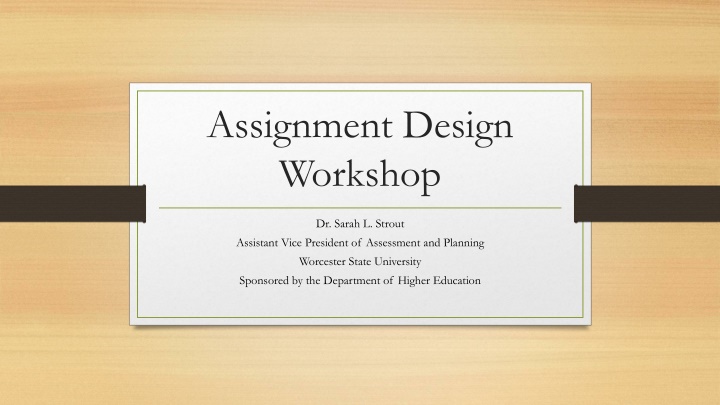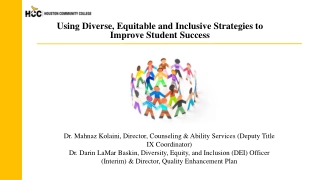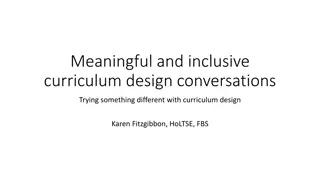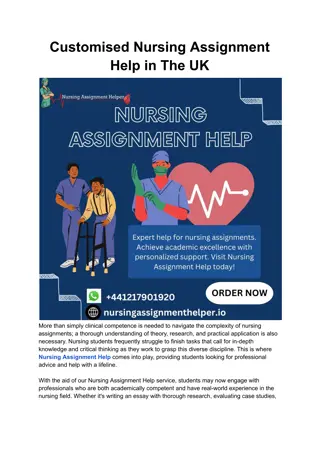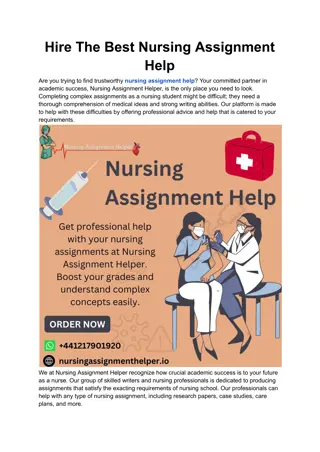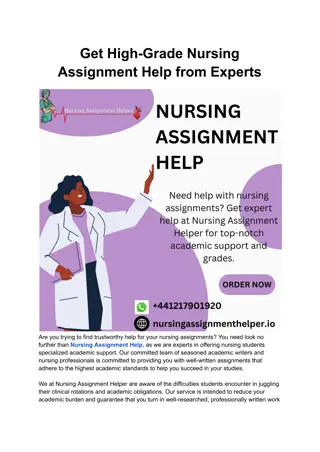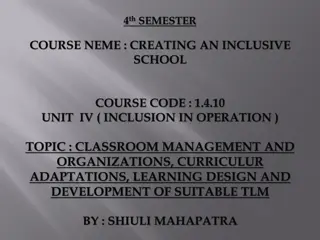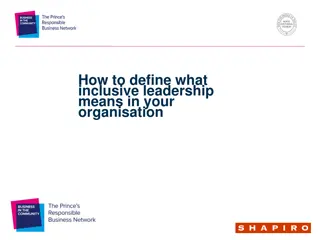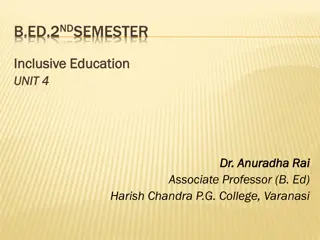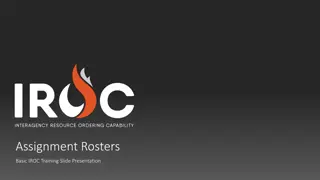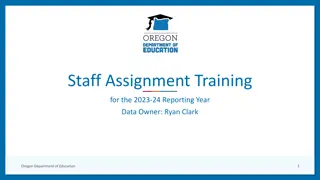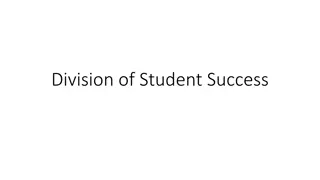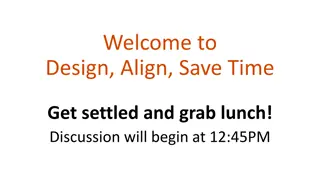Enhancing Student Success Through Inclusive Assignment Design
Effective assignment design is crucial for student success, particularly for first-generation and underrepresented students. Clear instructions, transparent rubrics, and inclusive assessment approaches are key factors in promoting learning outcomes and reducing biases. Inclusive assignments should accommodate diverse skill levels and provide detailed guidance to help students excel. By focusing on transparency and tailored support, educators can foster a more equitable academic environment.
Download Presentation

Please find below an Image/Link to download the presentation.
The content on the website is provided AS IS for your information and personal use only. It may not be sold, licensed, or shared on other websites without obtaining consent from the author.If you encounter any issues during the download, it is possible that the publisher has removed the file from their server.
You are allowed to download the files provided on this website for personal or commercial use, subject to the condition that they are used lawfully. All files are the property of their respective owners.
The content on the website is provided AS IS for your information and personal use only. It may not be sold, licensed, or shared on other websites without obtaining consent from the author.
E N D
Presentation Transcript
Assignment Design Workshop Dr. Sarah L. Strout Assistant Vice President of Assessment and Planning Worcester State University Sponsored by the Department of Higher Education
Outline Why assignment design matters What makes an effective assignment Paired work Discussion
Thought Experiment Imagine you are student in a course and these are your instructions for your final project. What is good about these instructions and what is missing and/or problematic? You ll produce a minimum 6 page research paper on a popular culture phenomenon of your choosing. Your paper must be a critical analysis of your chosen topic, based in the appropriate theory and methodology, with summary and description kept to a bare minimum. Your research should be supported with a minimum of 3 scholarly sources (only one of which can be an assigned course reading) and 2 popular or primary sources.
Why Assignment Design Matters Students do better when assignment instructions are clear and rubrics are shared with them TILT (Transparency in Learning and Teaching) found transparency enhanced the success of first-generation, low-income, and underrepresented college students in multiple ways at statistically significant levels, with a medium-to- large sized magnitude of effect.
Inclusive Assignments Poorly written and ambiguous student learning outcomes make it difficult for students to understand what is expected of them and thus, demonstrate their learning. Assessment approaches should allow for multiple ways for students to demonstrate mastery, rather than a one-size-fits-all approach. Clearly defined rubrics allow students to see exactly what is expected of them, and help instructors avoid bias when assessing student work. Instructions for student work should include as much information as possible, so that students do not need to read between the lines.
Inclusive Assignments, cont. Do not assume that students have entered your course or program with specific skills already developed. Writing, critical thinking, and information literacy skills (just to name a few) may not have been emphasized in the students high-school education. Disaggregating assessment data when possible allows faculty to develop interventions to help struggling students. Avoid comparing students against peers. Having a standard judgement (for example, a rubric) allows instructors to compare students against a pre-determined standard. When students do not perform well on assignments, ask them why. It may be that the instructions were not as clear as the instructor thought, or the students did not understand a concept and need review.
What Makes an Effective Assignment (NILOA) Intentional Clear to students Explicit about evaluation Engaging Responsive Reflective Linked to/aligned with other assignments
Assignment Design Steps For each step, please consider the answers for this assignment and keep note of your answers.
Step 1: What outcomes are you assessing? How many outcomes can you effectively assess in this assignment? What are the most important outcomes for this assignment? How do these outcomes relate to the major, general education, or institution- wide outcomes? Are the outcomes written in a way that students would understand what is expected of them?
Step 2: Who are your students What level students are in this course? Are the students all majors, mostly majors, mostly non-majors? Has this course or other courses prepared students to demonstrate competency on these outcomes?
Step 3: Assignment Assessment Do you have a rubric or scoring guide? Does the rubric include each of the outcomes you are assessing? Is there a description for each outcome what performance would look like at each level (e.g. not competent, competent, highly competent)? Are those descriptions clear and written in a way that a student would understand?
Step 4: Assignment Instructions Are the instructions clear, concise, and written at a level the student would understand? Do the instructions include: The purpose of the assignment? The outcomes being measured? A rubric or scoring guide? Details about length, sources, style, formatting etc? Frequently asked questions?
Paired work (30 min each- 60 min total) Introduce your assignment to your partner (for context and purpose) Discuss and give feedback on the outcomes for the assignment Discuss and give feedback on the rubric/scoring for the assignment Discuss and give feedback on the instructions for the assignment See handout for suggested questions Write a brief summary of feedback Switch to the other partner *try to look at the assignment from the student s perspective
Group Discussion What surprised you about this exercise? What was most helpful? What is something you learned that you can share with your colleagues? What are your next steps?
Resources NILOA Assignment Library: https://www.assignmentlibrary.org/ TILT: https://www.unlv.edu/provost/teachingandlearning Hutchings- Aligning Outcomes and Educational Practices http://learningoutcomesassessment.org/documents/Occasional%20Paper% 2026.pdf
